Disarmament Video Library

In the area of DISARMAMENT, the United Nations works for:
The issues listed on the Everyday Disarmament Cards are core topics that United Nations office for Disarmament Affairs deals with regularly. Click on the links to watch ten one minute video’s by Michael Douglas, UN Messenger of Peace. In these videos, he explains how the United Nations provides substantive and organizational support for norm-setting in the area of disarmament; fosters disarmament measures through dialogue, transparency and confidence-building; encourages regional disarmament efforts; and promotes outreach, advocacy and disarmament education.
Watch them
UN’s work on WMD disarmament and non-proliferation
High Representative Kim Won-soo, head of UN Disarmament Affairs, on GCTV with Bill Miller highlights the imminent dangers of nuclear proliferation, as well as those of chemical and biological weapons.
Watch it
Sustainable Development and Disarmament
The 2030 Sustainable Development Agenda makes clear there cannot be development without peace and security. And disarmament is integral to achieving peace and security. An over-armed world is an unstable and insecure one. Disarmament is critical to creating a safer, more prosperous, more equitable and more peaceful world.
Watch it
Messages from Hibakusha
This 2-minute short clip shown at the disarmament section of the UN tour route includes testimonies by three atomic bomb survivors (Hibakusha) from Hiroshima and Nagasaki.
Watch it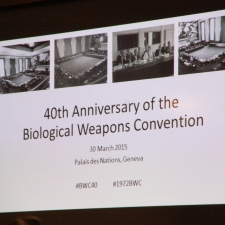
40th Anniversary of the Biological Weapons Convention
The Biological Weapons Convention (BWC) was the first international agreement to effectively prohibit an entire class of weapons of mass destruction. In the years since its entry into force in 1975, the BWC has helped to ensure that the idea of using biological weapons remains, as the Preamble to the treaty states, "repugnant to the conscience of mankind". This short film was produced by the United States Mission to the UN in Geneva and includes footage from an event organized in March 2015 to mark the BWC's 40th anniversary. The event took place in the Council Chamber of the Palais des Nations in Geneva, the very same room in which the BWC was negotiated over 40 years ago.
Watch it
What Happened That Day
Directed by Masaaki Tanabe of the Hypocenter restoration Film Production Committee. This is the sixth and final documentary film by an atomic bomb survivor from Hiroshima. Using computer generated graphics, it provides a truly revealing look at what happened on the day of the atomic bombing of Hiroshima, 6 August 1945.
Languages: Narration in English, interviews in Japanese with English subtitles
Watch it
Weapons of Mass Destruction: Threats and Global Responses
United Nations Security Council Resolution 1540 (2004) was unanimously adopted on 28 April 2004. The resolution creates obligations for all States to adopt legislation and put in place other measures to prevent the proliferation of nuclear, chemical and biological weapons, and their means of delivery, and to establish appropriate domestic controls over related materials to prevent terrorists and criminal organizations from obtaining the world’s most dangerous weapons.
On the occasion of the 10th anniversary of the adoption of the resolution, the United Nations Office for Disarmament Affairs, in cooperation with the UN Television, produced a documentary film "Weapons of Mass Destruction: Threats and Global Responses" to be disseminated globally on UNTV's series "21st Century" to over 90 broadcast partners worldwide.
The film was produced using extra-budgetary funds from the UNODA Trust Fund for Global and Regional Activities originating from grants of Kazakhstan, Norway, the United States of America and the European Union.
Watch it
April 6th
From February to June 2010 Oxfam called on young people around the world with a story to tell to submit their vision for a documentary film to the Shooting Poverty competition. The topic: to expose the true cost and impact of arms trade and armed violence on poor communities around the world.
April 6th was one of three finalists in the competition. It is the story of Renu, a 28 year-old widow in India, who transforms her life from the desperate situation of being labelled the wife of a "terrorist" to becoming a community leader fighting for the rights of widows of gun violence. April 6 is Renu's landmark, because it was the day she married, the day her husband was shot dead and the day she decided to start a new life fighting against the human suffering caused by armed violence.
A Shooting Poverty Discussion Guide is available in English, French, Portuguese, and Spanish. (PDF - 3.3MB)
Watch it
Bang For Your Buck
Another finalist from Oxfam's Shooting Poverty competition, Bang for Your Buck takes place in post-conflict Burundi, where grenades are plentiful and affordable. Journalist Teddy Mazina follows the stories behind the headlines of weekly explosive lethal attacks which has been thwarting the drive toward unity within the population and hindering social and economic development.
A Shooting Poverty Discussion Guide is available in English, French, Portuguese, and Spanish. (PDF - 3.3MB)
Watch it
Before the Blast
"Before the Blast" is a documentary about Protocol V of the Convention on Certain Conventional Weapons (CCW) which deals with explosive remnants of war. It is filmed using the backdrop of a Workshop on Explosive Ordnance Disposal, held in Budapest in June 2009. It show cases a behind-the-scenes glimpse at international cooperation and interaction among diplomats, military experts and other professionals as they tackle this important subject. Under International Humanitarian Law and in order to protect civilian populations, Protocol V requires that explosive remnants of war must be cleared once the fighting has ended.
Languages: English
Watch it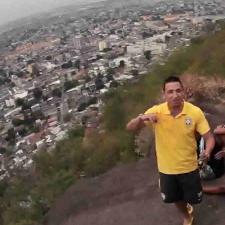
Grosso Calibre
One of three winners of Oxfam's 2010 Shooting Poverty competition, Grosso Calibre explores the culture of corruption and armed violence in the slums of Rio de Janeiro through the eyes of 23-year-old funk music star, MC Smith
Languages: Portuguese with English subtitles
Watch it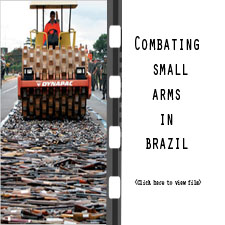
Combatting Small Arms in Brazil
Getting shot is number one killer among young men in Brazil. This film shows that the collection and destruction of arms in Brazil save lives. This film was produced for UN Television and originally released in January, 2007.
Languages: English
Watch it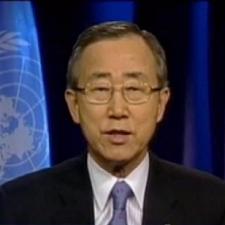
CTBT: For a Safer and More Secure World
More than 2,000 nuclear test explosions were conducted between 1945 and 1996, the year when the Comprehensive Nuclear-Test-Ban Treaty was concluded. The Treaty bans all nuclear explosions on earth. At the outset of the movie, UN Secretary-General Ban Ki-moon stresses the Treaty's crucial contribution to nuclear non-proliferation and disarmament. The film depicts the activities of the Preparatory Commission for the Comprehensive Nuclear-Test-Ban Treaty Organization in establishing a global verification regime to monitor compliance with the Treaty. It presents the challenging work at some of the monitoring facilities and at the International Data Centre in Vienna, where the data generated by the facilities are received, processed and analysed. The movie also features the successful performance of the CTBTO's monitoring system in conjunction with the announced nuclear test by the Democratic People's Republic of Korea on 9 October 2006.
Languages: English
Watch it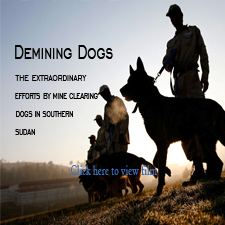
Demining Dogs
Land mine clearance is an integral part of the post conflict recovery process. Dogs have an acute sense of smell which is many times stronger than that of humans. This film features the extraordinary efforts by dogs who are helping to clear land mines in South Sudan. This film was produced for UN Television and originally released in September, 2008.
Languages: English
Watch it
Embrace! A world free of nuclear weapons
"Embrace! A world free of nuclear weapons" is a film made in support of the International Day against Nuclear Tests (29 August). Produced by the Permanent Mission of Kazakhstan to the United Nations in conjunction with the UN Department for Public Information and the UN Office for Disarmament Affairs, this short film traces the history of nuclear weapons tests since 1945 and their devastating effects on the environment and human health. The film sets out the arguments in favour of the early entry into force of the Comprehensive Nuclear-Test-Ban Treaty (CTBT) and how this would be an important step towards the goal of a world free of nuclear weapons.
Languages: English
Watch it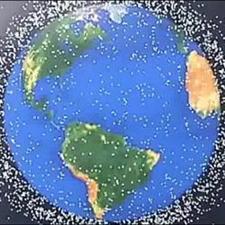
The Final Frontier: Explorers or Warriors?
Many people believe that space weapons are the new arms race. The teen filmmakers learned about space weapons while doing research for their second film, Genie in a Bottle Unleashed, about the first atomic bombs. For this film, Stephen and Trace had the opportunity to interview Astronaut and Senator John Glenn, Theresa Hitchens, Director of the United Nations Institute for Disarmament Research, and Dr. Everett Carl Dolman at the US Air Force's School of Advanced Air and Space Studies (SAASS).
Languages: English
Watch it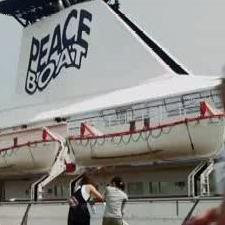
Flashes of Hope: Hibakusha Traveling the World
Directed by Costa Rica's Erika Bagnarello, the film, "FLASHES OF HOPE: Hibakusha Traveling the World," captured the voices of 102 victims of the atomic bombs dropped on Hiroshima and Nagasaki during World War II. The film is about human resilience and the determination of the Hibakusha (atomic bomb survivors) to deliver a message of hope. The voyage was meant for the atomic bomb survivors to pass along their stories, memories, suffering and hope for the future through interaction with people they met at each stop, such as activists, politicians and ordinary citizens. The Hibakusha tell the world about the tragedies that took place 64 years ago in Hiroshima and Nagasaki in order to protect others--regardless of their nationality--from ever having to experience the same horrors they faced. The 62-minute documentary filmed the atomic bomb survivors' four-month global journey aboard the vessel of Japan-based non-governmental organization Peace Boat, which visited a total of 23 ports in 20 countries from Sept. 7, 2008 to Jan. 13, 2009.
Languages: English and some interviews in Japanese with English subtitles
Watch it
Genie In A Bottle Unleased
With insight and a creative new voice, two Chicago-area 13-year olds, Stephen Sotor and Trace Gaynor, have written, edited and produced Genie In A Bottle Unleashed, a film that explores the history and consequences of the development of the atomic bomb. From the secrets of the Manhattan Project through the horrific devastation at Hiroshima and Nagasaki - these two 7th graders lead a new generation through our nuclear history; along the way they manage to interview Nobel prize winning scientists, the creator of the "Doomsday Clock," the mayor of Hiroshima and even a Hiroshima 7th grader about the legacy of the atomic bomb. Even more creatively, they also track down the proverbial "Genie" to find out why he has created such havoc. Screened at the United Nations, this 15-minute gem received a standing ovation.
Languages: English
Watch it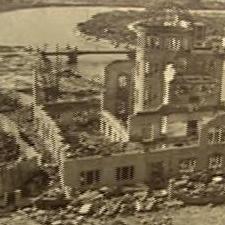
Ground Zero: Documents of Hiroshima
As an 8-year old boy, Director Masaaki Tanabe was evacuated to the suburbs of Hiroshima and survived the atomic bomb. His father, mother and younger brother all perished on that day in 1945. Based on his and other memories of atomic bomb survivors, Mr. Tanabe has re-created a graphical 3D of Hiroshima before it was destroyed. His film, Ground Zero: Documents of Hiroshima, is a unique glimpse of the city that disappeared the day the bomb was dropped.
Languages: Japanese, some description in both Japanese and English
Watch it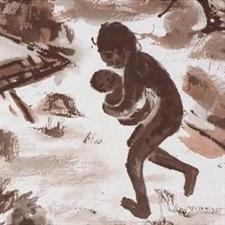
Hibakusha, Our Life To Live
The film is about the stories of Japanese, Korean, and American hibakusha. Their stories are linked to the relationship between Eiji Nakanishi (the youngest survivor of Hiroshima) and his little friend, Yoko, an eight year old girl he teaches to play the guitar. Little by little she learns about Eiji's hibakusha experience. She becomes intrigued by colorful pictures and drawings made by the survivors. "Will Eiji take me to the Peace Festival in Hiroshima?"
Languages: Narration in English and interviews/conversation in Japanese with English subtitles
Watch it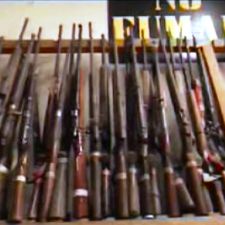
Honduras: UN Helps Reduce Small Arms
The film illustrates the UN-sponsored programme to teach former gang members skills they can use when they return from prison to society. The United Nations supports local authorities in Honduras in their efforts to collect, register and eliminate illicit weapons. This film was produced for UN Television and originally released in June, 2004.
Languages: English
Watch it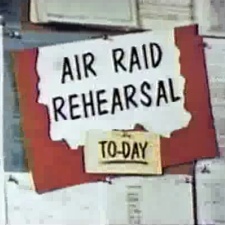
In My Lifetime
"In My Lifetime" takes on the complex realities of "the nuclear world", and searches internationally for an answer to the question is there a Way Beyond Nuclear Weapons? This documentary is part wake up call, part challenge for people to engage with the issue of ridding the world of the most destructive weapon ever invented.
Languages: English
Watch it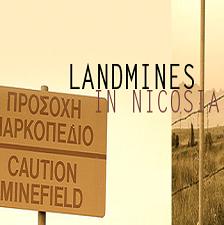
Landmines in Nicosia
The border between the Turkish and Greek communities in Nicosia, the divided capital of Cyprus, is peppered with land mines. The film shows the joint efforts by the United Nations and the European Union to clear land mines in that area making the land usable for human activities. In 2010, the United Nations deminers in Cyprus reached the milestone of 25,000 landmines cleared. This film was produced for UN Television and originally released in January, 2007.
Languages: English
Watch it
La Escopetarra: Guns into Guitars
Cesar Lopez is a musician from Colombia who transforms rifles into guitars which are called "escopetarra". This film shows how he became motivated to turn a weapon into a musical instrument. This film was produced for UN Television and originally released in October, 2007.
Languages: English
Watch it
Nuclear Weapons and the Human Future
"Do you think the threat of nuclear weapons is a relic of the past? If so, think again. The nuclear threat remains very real. At any moment of the day or night, a nuclear war could be triggered by accident or design. This isn't an exaggeration or a paranoid delusion. It's a fact." says David Krieger, President of Nuclear Age Peace Foundation. This presentation illustrates three steps that you can take to make difference in the Nuclear Age.
Languages: English
Watch it
Rebirth
This short film clip was shown as a prologue to "the Harmony For Peace Benefit Concert" on May 16, 2010 at Carnegie Hall in New York, NY. The concert was held in support of nuclear nonproliferation and coincided with the NPT Review Conference. Five well known artists and artist groups from five nuclear states, along with Japan, graced the concert with their musical and poetic performances.
The film is an expression of the strength of the victims of the atomic bombs dropped on Hiroshima and Nagasaki. The two cities have survived and have prospered after the cataclysm. That tragedy should never be repeated anywhere in the world. We, at the Harmony For Peace Foundation strive to reach a common goal where our children of the future can live in peace and to co exist with mutual understanding. (Please go to: HarmonyForPeace.org to find out more about the concert.)
Please contact info(AT)harmonyforpeace.org for more information about the film and foundation. The film is not to be copied or distributed without written consent from the Harmony For Peace Foundation. Thank you for your understanding.
Watch it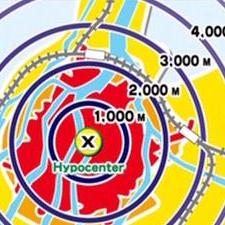
Testimonies of Hiroshima and Nagasaki: Women Speak Out For Peace
The power of individual testimony can inspire action and strengthen our determination to make nuclear abolition a reality. "Testimonies of Hiroshima and Nagasaki: Women Speak Out for Peace" is a testament of hibakusha (atomic bomb survivors) who experienced the bombings of the cities of Hiroshima and Nagasaki, Japan, in 1945, and their cries for peace.)
The DVD is available at PeoplesDecade.org. Copies of the DVD are available free of charge for use in educational activities. Please contact contact(AT)peoplesdecade.org for further information.
Watch it